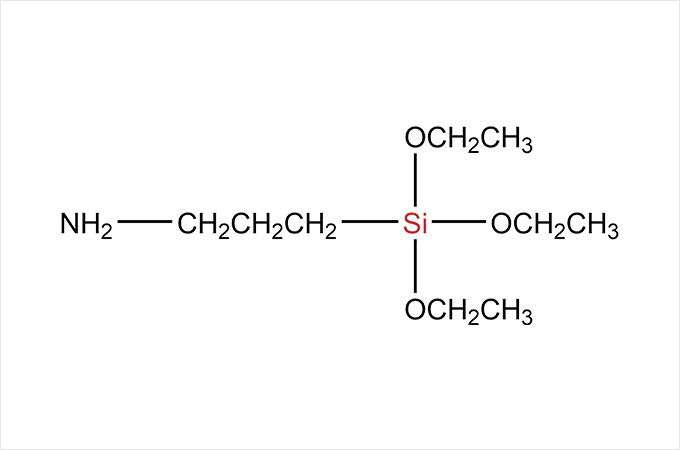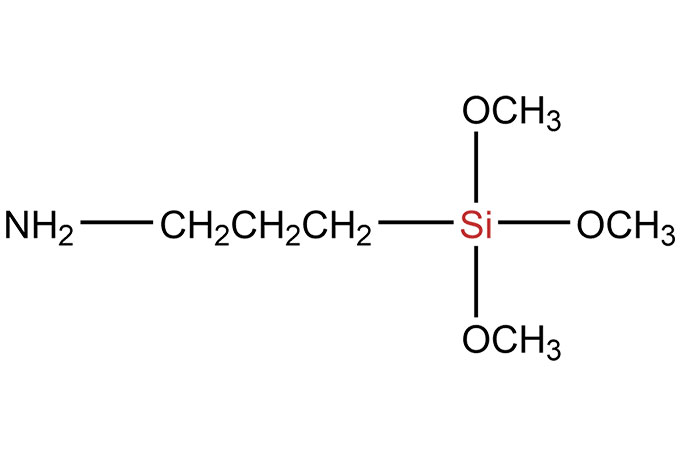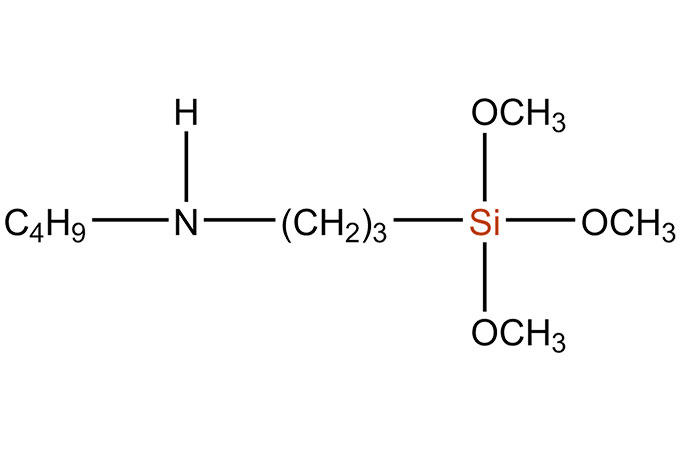Silane coupling agents are generally illustrated:
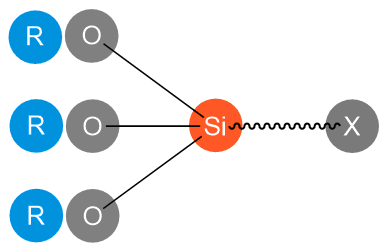
Silane coupling agents: silicone (Si) is the center of the silane molecule which contains an organic functional group (X) [ex: vinyl, amino, chloro, epoxy, mercapto, etc.], with a second functional group (R) [ex: methoxy, ethoxy, etc.]. The functional group (R) will attach to an organic resin while the functional group (R) attaches to an inorganic material or substrate to achieve a "coupling" effect.
Silane coupling agents by SiSiB are with affordable price, predominately used as mediators, silicone bonding adhesive, bonding organic materials to inorganic materials. As a result silanes and other coupling agents will improve the electrical and mechanical strength properties of materials in wet or dry conditions.
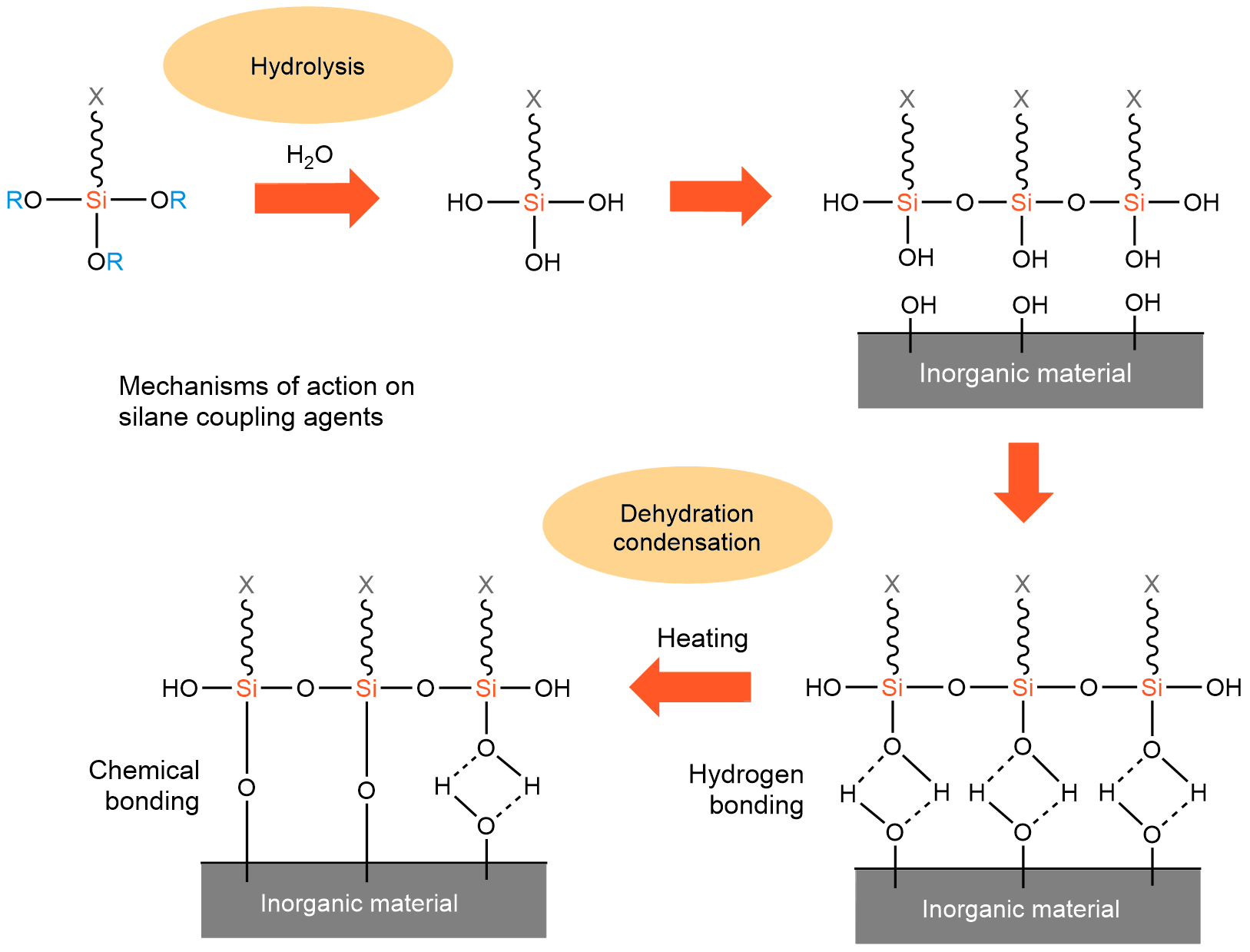
The inorganic group (R) of the silane molecule will hydrolyze to produce silanol, which forms a metal hydroxide or siloxane bond with the inorganic material. The organic group (X) of the silane molecule will react with the organic material to produce a covalent bond. As a result the organic material and the inorganic material are tightly bound together after heating.
This unique property of organo silane coupling agents is utilized widely in dentistry, in the application of the silane coupling agents for the surface treatment of glass fiber products, performance improvement of fiber-reinforced plastics by the direct admixture to the synthetic resin, improvement of paints and other coating materials and adhesives, modification of surface properties of inorganic fillers, surface priming of various substrate materials, etc.
When a silane coupling agent is used in a thermosetting resin-based fiber-reinforced material, remarkable improvements are obtained in the mechanical and electrical properties of the material and the effect is more remarkable when the material is used in a wet or humid condition.
Application of silane coupling agents to thermoplastic resin-based fiber-reinforced materials is also actively performed along with the efforts to develop a silane coupling agent having further enhanced coupling effects.
Basic methods for using silane coupling agents
There are three basic approaches for using silane coupling agents. The silane can be used to treat the surface of the inorganic materials before mixing with the organic resin or it can be added directly to the organic resin or holistic mixing (in organic-inorganic mixture).
Method I: The Surface Treatment of Inorganic Materials
Dip glass fiber into 0.1-0.5% silane coupling agent – water solution(or water-ethanol solution) and air-dry, at last dealing in desiccatore with 110-120°C for 5-10 minutes.
Filler which contains an excess of hydroxyl groups on the surface is especially effective.
The effect with different kinds of fillers
Excellent Effect | Silica, alumina, glass, quartz, porcelain clay |
Good Effect | Mica, talc, clay, water and alumina, grammiteiron dust, potassium titanic acid |
Slight Effect | Asbestos, ferric oxide, zinc oxide, carborundum, silicon nitride |
Poor Effect | calcium carbonate, carbon, barium sulphate,boron |
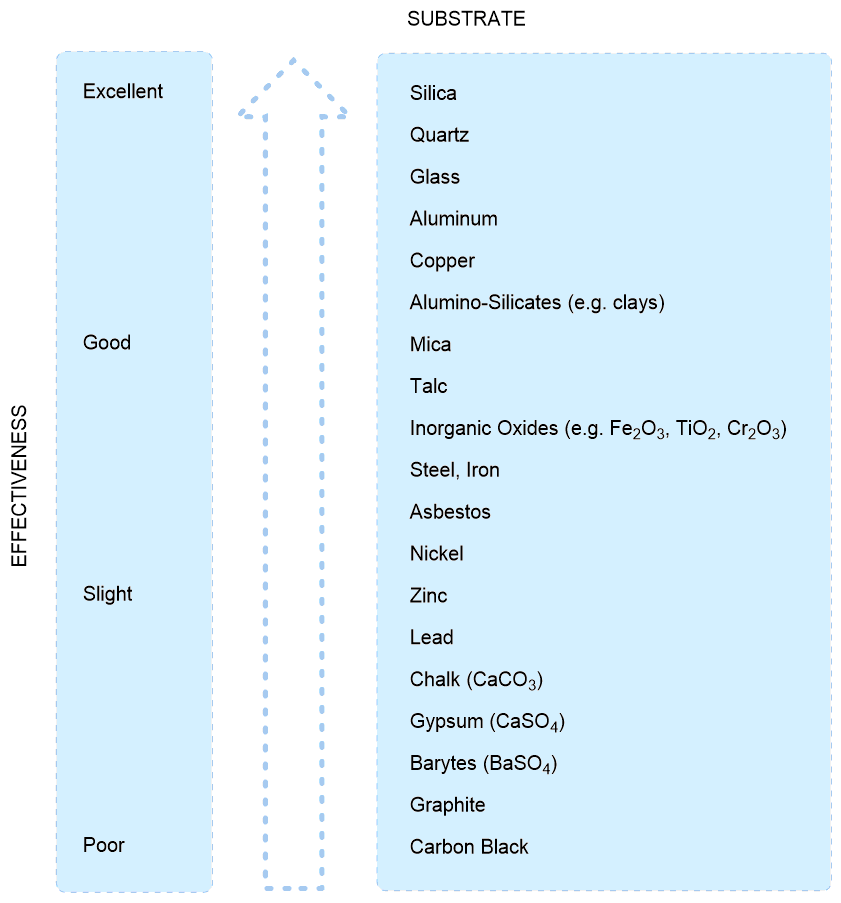
 There are three general methods for treating the surfaces of inorganic filler materials before they are added to the organic resins.
There are three general methods for treating the surfaces of inorganic filler materials before they are added to the organic resins.
Wet Method
By mixing slurry of the inorganic materials in a dilute solution of the silane coupling agent, a highly uniform and precise surface treatment of the inorganic material can be obtained.
Dry Method
A high shear, high speed, mixer is used to disperse the silane coupling agent into the inorganic materials. The silane is generally applied either neat or as a concentrated solution. When compared to the Wet Method, the Dry Method is most often preferred for large-scale production, treating a large amount of filler in a relatively short time and generating relatively little mixed waste; however, it is more difficult to obtain uniform treatment with this method.
Spray Method
Spray the silane coupling agent on high temperature filler that was just taken out from furnace. The method may omit dry procedure and make the process simplify, but pay attention to perflation and ignite.
Method II: Addition To Organic Materials
Compared to the methods for the surface treatment of inorganic materials, adding the silane to the organic silicone resin is more widely used in industries because of its excellent process efficiency, although curing may be more difficult. There are two general methods.
Integral Blending
This method involves simple blending of the silane coupling agent into the composite formula as the inorganic and organic materials are mixed together.
Master Batch
In this method, the silane coupling agent is first added to a small amount of the organic resin material to form what is referred to as a "master batch". In general, the silane coupling agent dosage is 0.2-2% or so. Usually in the form of pellets or large granules, the master batch can be easily added along with the pellets of the organic resin when producing the composite materials. Pay attention to bodying and generate gelatin phenomena by silane coupling agent.
Method III: Holistic mixing (in Organic-Inorganic mixture)
Directly add the diluent of silane coupling agent and organic solvent when mixing organic resins and inorganic fillers. The silane coupling agent dosage is 0.2-2% or so.
Calculating the Quantity of Silane Required:
The silicone molecule is preferably attached to the surface of the inorganic material as a primer to form a mono-layer. Applying a silane as a primer will produce optimum coupling results between the substrate and the resin to be applied. When used as a primer the required amount of silane can be calculated by the following:

Filler | Surface Area of Filler (m2/g) |
E-glass | 0.1 - 0.12 |
Quartz | 1 - 2 |
Kolin | 7 |
Clay | 7 |
Talc | 7 |
Aluminum polysilicate | 1 |
Calcium carbonate | 5 |
Calcium silicate | 2.6 |
Product | Minimum Coverage Area(m2/g) |
SiSiB® PC1110 | 436 |
SiSiB® PC1100 | 353 |
SiSiB® PC3100 | 330 |
SiSiB® PC4100 | 314 |
SiSiB® PC2300 | 398 |
SiSiB® PC1220 | 380 |
SiSiB® PC1200 | 351 |
The actual values may deviate from the calculated value depending on the surface condition of the filler or the silane treating process. The following values may be used as guidelines when the value is unknown. A dilution of 1% silane to filler may be considered as standard. Generally 0.3% to 0.5% is recommended.
Reactivity:
The alkoxy groups of the coupling agents react with water to form silanol groups which immediately form covalent bonds by dehydration and condensation:

NOTES: The choice of a SiSiB® Silane is specific to resin type and application. The Selection Guidelines is provided to help you select the appropriate SiSiB® Silane for various polymer (resin) systems. It should be considered merely a starting point. The selection of the preferred silane for a specific end-use application may require specific experimentation.
 English
English 日本語
日本語 한국어
한국어 français
français Deutsch
Deutsch Español
Español italiano
italiano русский
русский português
português العربية
العربية tiếng việt
tiếng việt


 There are three general methods for treating the surfaces of inorganic filler materials before they are added to the organic resins.
There are three general methods for treating the surfaces of inorganic filler materials before they are added to the organic resins.

